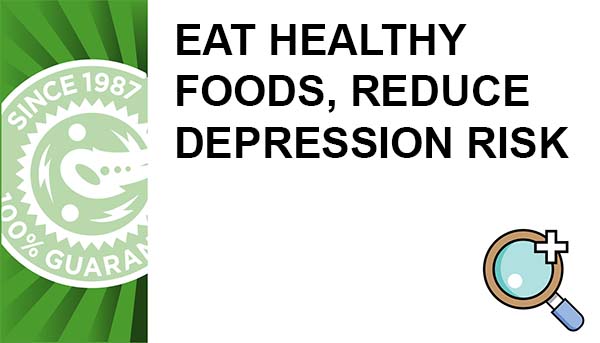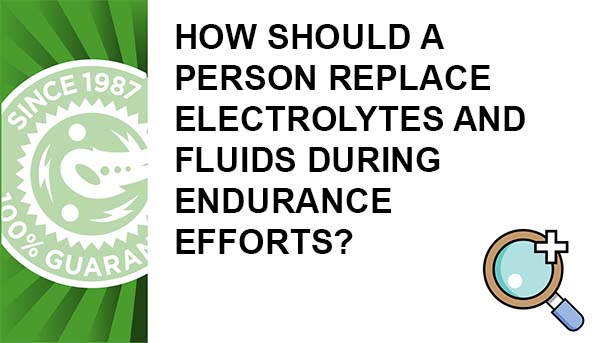By William Misner Ph.D.
OSMOLALITY REVIEW: PREFATORY REMARKS
The premise to our position is that each individual athlete has a set reasonable osmolar pressure which changes when their internal body temperature and chemistry change accordingly. Human body fluid 300 mOsm osmolality is a reasonable application for carbohydrate solution absorption at room temperatures or less in sedentary to less than 50% VO2 Max Rates, as reflected by heart rate. Certain negative evidence for this statement may be observed in the overflowing medical tents observed in endurance events where competitors are graciously supplied with one or two fuel sources or water. These athletes, now patients, did not successfully predetermine, by trial-dose training, what exact mixture works best in their individual biochemistry under like conditions. Some of them simply accepted the manufacturer's recommendation to mix the solution at body fluid osmolality levels, only to experienced gastric rebellion 3/4ths of the way through the event!
According to our manufacturer's specifications, long-chain complex carbohydrates used in both Sustained Energy and Hammer Gel may be respectively mixed as high as 24% solution for Sustained Energy or 20% solution for Hammer Gel to create a body fluid level 300 mOsm osmolar solution. This figure is equated to a four-ounce solution of Sustained Energy being 24% solids by weight or a five-ounce solution of Hammer Gel being 20% solids by weight. When exercising in temperatures below 60 degrees/60% humidity, eight out of ten athletes will gastrically respond positively to a higher percent mixture of fuel to fluids. When most endurance events are conducted, outdoor conditions exceed 60 degrees/60% humidity. During such conditions half or more of the athletes have been observed to react negatively to a hypotonic body-fluid osmolar mix. Diluting or lowering the osmolar pressure of an energy drink or gel is therefore required when intensity is increased by pace rate, duration, elevation in altitude, humidity, or temperature conditions. Individual biochemistry may vary in a by a factor of 2X. Only a few athletes adapt to a 20-24% osmolar solution during extreme endurance events, while most athletes respond positively by diluting to a 10%-12% solution mix when the typical difficult aforementioned environmental conditions are present.
Simple-sugar solutions at body fluid osmolality levels are slowly absorbed at the rate of 6-8% maximum due to employing fructose or sucrose for sweetening. Simple sugars dramatically resist gastric transition when internal body temperatures rise proportionate to time, intensity of pace, duration, fluid and electrolyte losses. Such increases from body fluid and electrolyte depletion may permit only 3-5% sugar solutions to absorb in most athletes, before stomach upset, cramping, or muscle failure occurs. When a solution containing simple sugars is added to one containing complex carbohydrates, osmolality may double, imposing gastric stress during endurance events.
Simple sugars added to complex carbohydrates may refuse gastric entry due to increasing solution hypertonic values. If body fluids and electrolytes are depleted, the least ideal option is to ingest a simple sugar product with one that contains only complex carbohydrates. The use of fiber-containing foods such as energy bars, bananas, or orange slices may also induce bowel peristalsis to movement resulting in time-loss from a required bathroom break. As time is spent in endurance performance, fuel-fluid losses have an approximate replenishment rate of 240-280 k/cal in a 16-24 fluid ounce solution each hour when the individual athlete's electrolyte availability is present. Adding sugared drinks, fibered foods, or too high a solution of complex carbohydrates may result failure to meet expectations for completing the event. Why would an endurance athlete train 90-120 days for an event, then allow their fuel and fluid intake to be dictated by someone else, resulting in disappointment? Whatever product used in the race should be proven by trial-dose in training, then used in the event.
Both Sustained Energy and Hammer Gel are made for extreme endurance events. The average fit endurance athlete can perform up to 75% VO2 Maximum for 85-90 minutes before rate of pace deteriorates in the absence of refueling. Osmolality solutions that are set in stone at a body fluid osmolar pressure of 300 mOsm may not be the ideal application for all individual fuel requirements to postpone fatigue. What is the solution-ideal mix suggested for both products is defined in terms of most athletes for events lasting at least two hours in elevated temperatures. This solute-discussion focuses on what we have observed works for most athletes in observations recorded over the past 10 years in a multiple of events in Iron Man Triathlons, Marathons, the Race Across America, Eco-Challenge events, and Ultramarathons.
SUSTAINED ENERGY INGREDIENTS
One three scoop serving of Sustained Energy contains:
|
|
|
|
|
|
|
|
|
One scoop of Sustained Energy may be mixed per eight fluid ounces of distilled water. This mixture approximates a body fluid solution at below-hypotonic body fluid mOsm-levels, resulting in immediate gastric emptying in 60 degree-60% humidity conditions. Hyperthermic temperatures conditions above 70 degrees and 70% humidity may require further dilution of one scoop in a 8-10 fluid ounces solution to accommodate rapid electrolyte losses. Since the variance in solute transit success is remarkably individual, it is suggested that each athlete train in event-like conditions, with the above mixture first, before diluting or increasing solids to fluids. The range of osmolar mixtures are from 3 scoops Sustained Energy to as little as 9 fluid ounces (rare or in hypothermic cold) to the suggested likely mixture of 3 scoops in 24 fluid ounce water bottle (most athletes in hyperthermic conditions).
*Number of calories per 16 fluid ounce solution = 222.60 calories (2 scoops)
*Number of grams solute per 100 ml of solution = 11.96 grams/100 ml
HAMMER GEL INGREDIENTS
A single two tablespoon serving is 24 grams carbohydrate by weight providing 100 calories from long-chain carbohydrates. Each serving also contains Energy Smart sweetener, four amino acids (l-leucine, l-isoleucine, l-valine, l-alanine), sodium, potassium chloride, and potassium sorbate as a preservative.
Each serving of Hammer Gel should ideally be chased by or mixed with 8 fluid ounces distilled water. This mixture approximates a body fluid solution at below-hypotonic body fluid mOsm-levels, resulting in immediate gastric emptying in 60 degree-60% humidity conditions. Hyperthermic temperatures conditions above 70 degrees and 70% humidity may require further dilution of one serving in a 8-10 fluid ounces solution to accommodate rapid electrolyte losses. Since the variance in solute transit success is remarkably individual, it is suggested that each athlete train in event-like conditions and test this mixture first before diluting or increasing solids to fluids. The range of osmolar mixtures are from up to 3 servings Hammer Gel to as little as 12 fluid ounces (rare or in hypothermic cold) to the suggested likely mixture of 3 servings in a 24 fluid ounce water bottle which meets or exceeds the demands of most athletes in a typical end-of-season event held in hyperthermic conditions.
*Number of Calories per 16 fluid ounce solution = 200.00 Calories (2 servings)
*Number of grams solute per 100 ml of solution = 10.14 grams per 100 ml.
BODY FLUID OSMOLALITY CALORIC VALUES OF SUGAR AND LONG CHAIN CARBOHYDRATES
Gastric Transit Rates Favor Maltodextrin During Exercise
| TYPE OF FUEL | CALORIES PROVIDED AT 280-300 mOsm. OSMOLALITY |
Glucose |
0.2 cal/ml |
Fructose |
0.2 cal/ml |
Sucrose |
0.4 cal/ml |
Maltodextrins |
1.0+ cal/ml |
GASTRIC EMPTYING rates are effected by stomach volumes ranging from 400 ml to 800 ml. (13-26 fl.oz.) Some athletes tolerate significantly higher stomach volumes than do others. In a ten minute period of time, athletes were observed to empty stomach volumes at the following rates[1, 2, 3]:
- Pure Water Solution 65%
(From 400 ml, 260 ml was emptied. From 800 ml, 520 ml emptied) - Isotonic 7% Carbohydrate Solution 50%
(From 400 ml, 200 ml was emptied. From 800 ml, 400 ml emptied) - Glucose 15% Solution 25%
(From 400 ml, 100 ml was emptied. From 800 ml, 200 ml emptied) - Maltodextrin 18% Solution 25%
(From 400 ml, 100 ml was emptied. From 800 ml, 200 ml emptied)
Both Sustained Energy (100%) and Hammer Gel (90%+) consist of carbohydrates from a multiple versions of Maltodextrin-Base, Long-Chain Carbohydrates.
REFERENCES
- Gastric emptying with repeated drinking during running and bicycling. Rehrer NJ, Brouns F, Beckers EJ, Ten Hoor F, Saris WH Int J Sports Med 1990 Jun 11:3 238-43.
- Faster gastric emptying for glucose-polymer and fructose solutions than for glucose in humans. Sole CC, Noakes TD, Eur J Appl Physiol 1989 58:6 605-12.
- High rates of exogenous carbohydrate oxidation from starch ingested during prolonged exercise, Hawley JA, Dennis SC, Laidler BJ, Bosch AN, Noakes TD, Brouns F, J Appl Physiol 1991 Nov 71:5 1801-6.
JOURNAL OF ENDURANCE
Editor
http://www.onelist.com/community/endurancelist
AMERICAN SOCIETY OF EXERCISE PHYSIOLOGISTS
Associate Editor, Metabolic Responses to Exercise Journal of Exercise Physiology-online
http://www.css.edu/x6913.xml
AUTHOR:
NUTRITION FOR ENDURANCE: FINDING ANOTHER GEAR
Dolezal & Associates Publishing, Livermore California, 1998.








